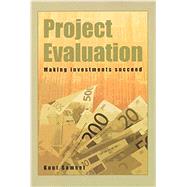
| CHAPTER 1 THE PROJECT | |||||
|
3 | (2) | |||
|
5 | (2) | |||
|
7 | (2) | |||
|
9 | (2) | |||
|
11 | (2) | |||
|
13 | (3) | |||
|
16 | (3) | |||
|
19 | (3) | |||
|
22 | (3) | |||
|
25 | (6) | |||
| CHAPTER 2 WHAT IS EVALUATION? | |||||
|
31 | (3) | |||
|
34 | (3) | |||
|
37 | (2) | |||
|
39 | (2) | |||
|
41 | (3) | |||
|
44 | (2) | |||
|
46 | (2) | |||
|
48 | (2) | |||
|
50 | (5) | |||
| CHAPTER 3 EVALUATION, STEP BY STEP | |||||
|
55 | (2) | |||
|
57 | (2) | |||
|
59 | (2) | |||
|
61 | (2) | |||
|
63 | (2) | |||
|
65 | (2) | |||
|
67 | (2) | |||
|
69 | (4) | |||
| CHAPTER 4 THE FOCUS OF EVALUATION | |||||
|
73 | (4) | |||
|
77 | (2) | |||
|
79 | (2) | |||
|
81 | (2) | |||
|
83 | (3) | |||
|
86 | (2) | |||
|
88 | (5) | |||
| CHAPTER 5 THE CROSS-SECTORAL VIEW | |||||
|
93 | (3) | |||
|
96 | (2) | |||
|
98 | (3) | |||
|
101 | (2) | |||
|
103 | (2) | |||
|
105 | (2) | |||
|
107 | (4) | |||
| CHAPTER 6 DESIGN AND METHODOLOGY | |||||
|
111 | (2) | |||
|
113 | (2) | |||
|
115 | (3) | |||
|
118 | (3) | |||
|
121 | (2) | |||
|
123 | (6) | |||
| CHAPTER 7 DATA COLLECTION METHODS | |||||
|
129 | (3) | |||
|
132 | (2) | |||
|
134 | (2) | |||
|
136 | (2) | |||
|
138 | (2) | |||
|
140 | (2) | |||
|
142 | (2) | |||
|
144 | (2) | |||
|
146 | (2) | |||
|
148 | (5) | |||
| CHAPTER 8 ENSURING QUALITY | |||||
|
153 | (2) | |||
|
155 | (2) | |||
|
157 | (3) | |||
|
160 | (2) | |||
|
162 | (3) | |||
|
165 | (2) | |||
|
167 | (6) | |||
| CHAPTER 9 REPORTING AND USING RESULTS | |||||
|
173 | (3) | |||
|
176 | (3) | |||
|
179 | ||||
| CHAPTER 10 PROJECT CASES | |||||
|
183 | (9) | |||
|
192 | (6) | |||
|
198 | (18) | |||
| ANNEXES | |||||
|
216 | (12) | |||
|
228 | (3) | |||
|
231 | (1) | |||
|
232 |
The New copy of this book will include any supplemental materials advertised. Please check the title of the book to determine if it should include any access cards, study guides, lab manuals, CDs, etc.
The Used, Rental and eBook copies of this book are not guaranteed to include any supplemental materials. Typically, only the book itself is included. This is true even if the title states it includes any access cards, study guides, lab manuals, CDs, etc.